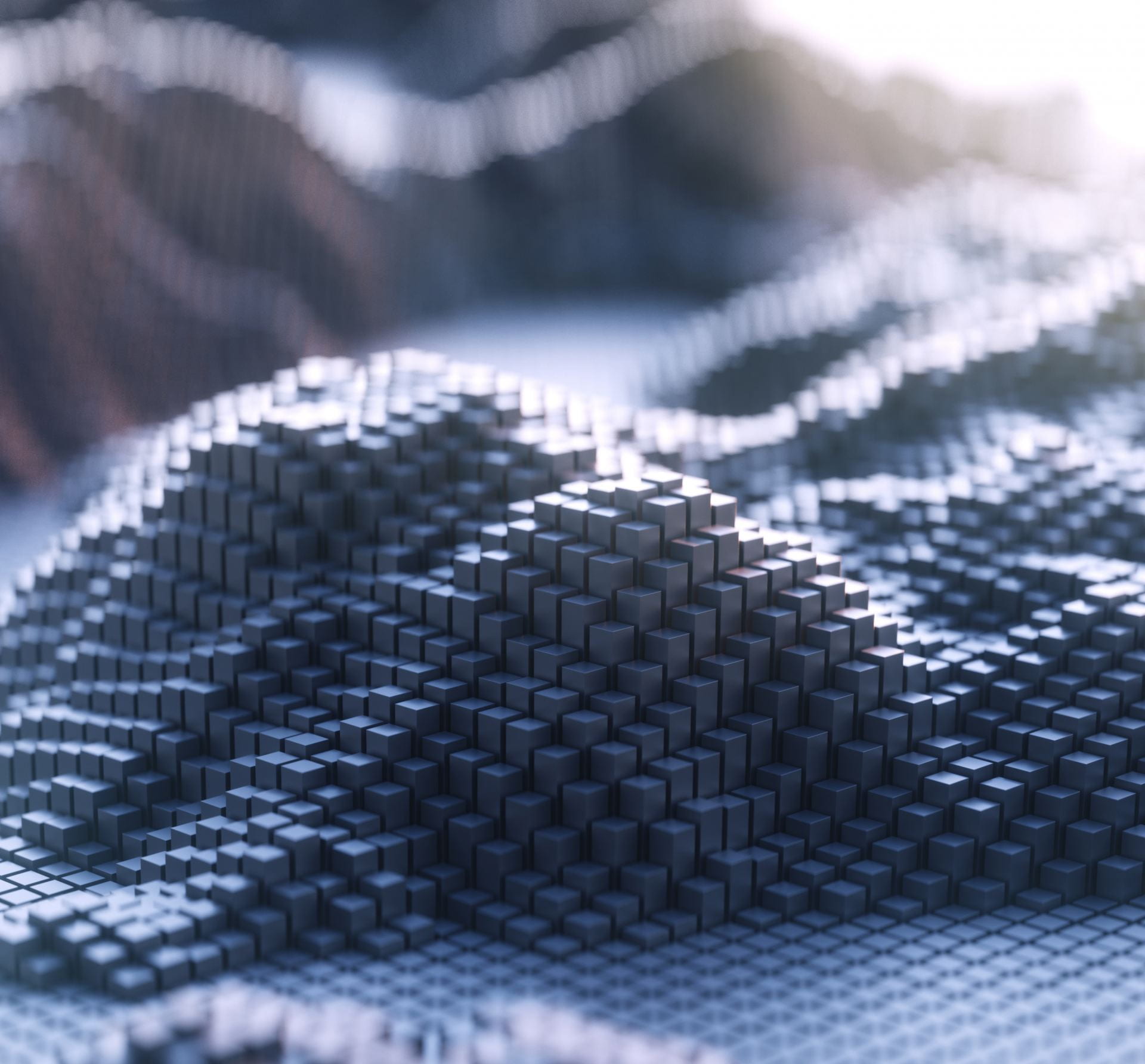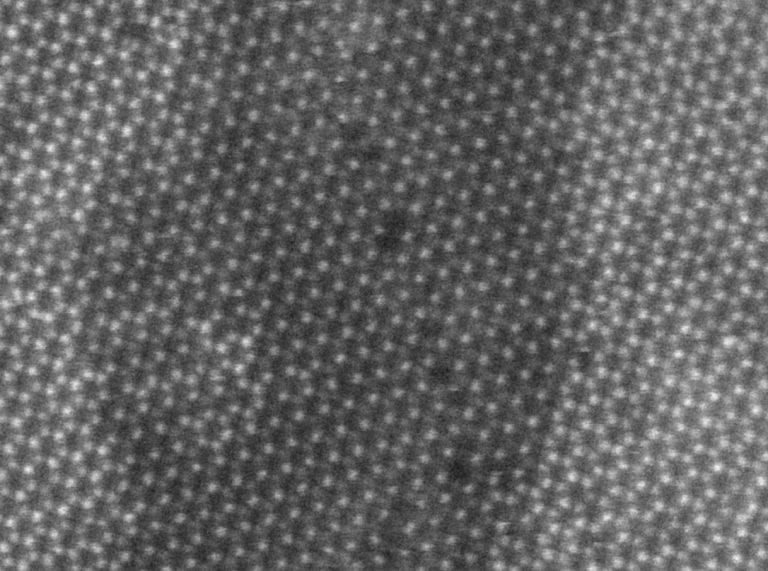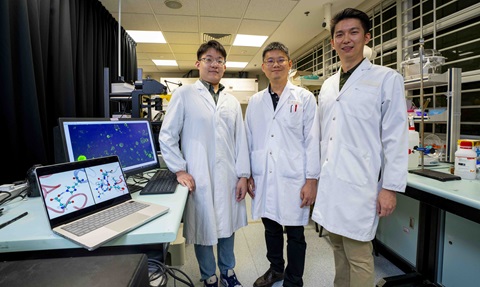Getting the FACTS right
NTU’s Facility for Analysis, Characterisation, Testing and Simulation—or FACTS for short—is bringing sophisticated, ultra-high-resolution techniques to the quest for answers in science.

Providing technologies such as aberration-corrected transmission electron microscopes, scanning electron microscopes and X-ray-based instruments, the Facility for Analysis, Characterisation, Testing and Simulation (FACTS) helps to break down barriers between disciplines and supports synergistic science.
Browse through the history books and you’ll often find human civilisation documented in terms of stone, bronze and iron, highlighting how each quantum leap in human capability has been built on the discovery or invention of new materials. To identify and exploit novel properties in materials old and new, scientists are now using sophisticated instruments to peek into the very “heart” of matter—the atoms and forces that constitute objects in our world.
“With techniques such as electron microscopy and X-ray diffraction analysis, we are able to directly observe even individual atoms and measure how they behave under various conditions,” says Prof Lam Yeng Ming, Chair of NTU’s School of Materials Science and Engineering (MSE) and Director of the Facility for Analysis, Characterisation, Testing and Simulation (FACTS).
“For example, my research area is in nanostructured functional materials where we are interested in how their properties are related to the organisation of their atoms and what kinds of defects exist in the materials. The only way to do that is by using X-rays or transmission electron microscopy (TEM).”
Equipped for excellence
Recognising the importance of empowering scientists to explore materials at the atomic scale, NTU first established its Electron Microscopy & X-Ray Diffraction lab in 1996, under the auspices of the School of Applied Science, MSE’s precursor school. This seed, planted more than two decades ago, has since blossomed into FACTS, which serves the entire University with its expanded repertoire of research equipment, including two aberration-corrected transmission electron microscopes, a range of scanning electron microscopes and several X-ray-based instruments.
“The cost of acquiring such equipment is very high, so a shared facility like FACTS makes practical sense,” Prof Lam explains, adding that the Facility could not exist without the support from the University to acquire and maintain the instruments. FACTS serves approximately 650 active users per year, which means each instrument rarely sits idle. Importantly, no scientist is deprived of using these state-of-the-art machines because they cannot afford to buy them, she says.
High-end instruments require high-end knowledge to make sense of the images and spectra, so FACTS has recruited expert scientists who not only help users but also perform and publish their own research aimed at improving and developing new techniques.
Yet another critical advantage of FACTS is that the environment for the instruments has been custom-built to ensure that the data generated is accurate. “Many people don’t realise how sensitive these electron microscopes are to vibrations, sound and electromagnetic interference,” says Asst Prof Sara Sandin, Deputy Director of FACTS.
When making observations at the sub-nanometre scale, even the slightest disturbance can compromise the quality of images or measurements. Hence, the most sensitive instruments—the TEMs, which can be used to visualise single atoms—are housed in rooms stabilised by large underground concrete slabs, soundproofed and shielded to exclude electric and magnetic fields.
“There’s no point in having the best equipment if you don’t operate them under the right conditions,” Asst Prof Sandin emphasises.
Breaking barriers between disciplines
More important than the physical apparatus available at FACTS is the talent that it attracts and nurtures. For example, Prof Lam highlights how FACTS has become a hub for the cross-fertilisation of ideas among scientists in the region and further abroad.
“Very often, we get visiting scientists, many of whom are well-known microscopists, stopping by FACTS to give seminars and interact with users and students,” she says. FACTS scientists also run their own training programmes, both to introduce users to each technique and to train them to the most advanced level.
Dr Chris Boothroyd, Senior Principal Scientist at FACTS, notes that the nature of the instrumentation at FACTS promotes interdisciplinary research as well. “For instance, while electron microscopy can be used to ‘see’ the machinery of life—proteins and DNA inside cells—it can also be used to reveal the nanoscale structure of two-dimensional semiconductor materials such as molybdenum disulphide and molybdenum diselenide,” he says.
“These materials form layers that are only one or two atoms thick, and our microscopes are powerful enough to enable viewing of individual atoms. We are also able to heat or cool materials in the microscope and watch them grow under different environmental conditions.”
 Individual atoms in a two-dimensional molybdenum disulphide and molybdenum diselenide compound material imaged with a high-resolution scanning transmission electron microscope at FACTS. Credit: Zhou Jiadong, Liu Zheng and Zhu Chao.
Individual atoms in a two-dimensional molybdenum disulphide and molybdenum diselenide compound material imaged with a high-resolution scanning transmission electron microscope at FACTS. Credit: Zhou Jiadong, Liu Zheng and Zhu Chao.
Indeed, there is much that biologists and materials scientists can learn from one another, Prof Lam notes. Biological samples, for one, are considered low contrast, yet biologists have developed ways to visualise them using electron- and X-ray-based methods. Materials scientists working on soft materials can therefore take a leaf out of the biologists’ protocol book.
On the other hand, materials scientists who may be more familiar with spectroscopy techniques for understanding elements and structures can guide biologists in addressing fundamental molecular mechanisms.
“There’s a lot of synergy and complementarity to be found at FACTS,” she says.
Bringing the University’s innovations to industry
A happy problem that has emerged from the mingling of scientific backgrounds and expertise at FACTS is the burgeoning amount of data being generated. “High-throughput electron microscopes generate up to two terabytes of data per day,” says Asst Prof Sandin.
Analysing this data requires significant computing power and advanced image processing procedures. Data storage and transfer remain a challenge, she points out.
“This is not just a problem for NTU; it’s a problem for everyone worldwide,” Prof Lam explains.
Going forward, Asst Prof Sandin hopes to see FACTS become a centre for the development of advanced electron microscopy methods, especially for new applications. “We have amazing tools at FACTS, but innovation in terms of sample preparation and image analysis are also important,” she says.
Agreeing, Prof Lam stresses the importance of knowledge sharing and thinks that FACTS can serve not just the University’s needs, but also those of industry. For instance, its capabilities have helped to convince multinational companies like Procter & Gamble and Rolls-Royce to carry out research and development in Singapore.
“Singapore now has a critical mass of microscopists; I think FACTS will allow more productive interactions between the various universities, schools and institutions,” Prof Lam concludes.














/enri-thumbnails/careeropportunities1f0caf1c-a12d-479c-be7c-3c04e085c617.tmb-mega-menu.jpg?Culture=en&sfvrsn=d7261e3b_1)

/cradle-thumbnails/research-capabilities1516d0ba63aa44f0b4ee77a8c05263b2.tmb-mega-menu.jpg?Culture=en&sfvrsn=1bc94f8_1)

7e6fdc03-9018-4d08-9a98-8a21acbc37ba.tmb-mega-menu.jpg?Culture=en&sfvrsn=7deaf618_1)






